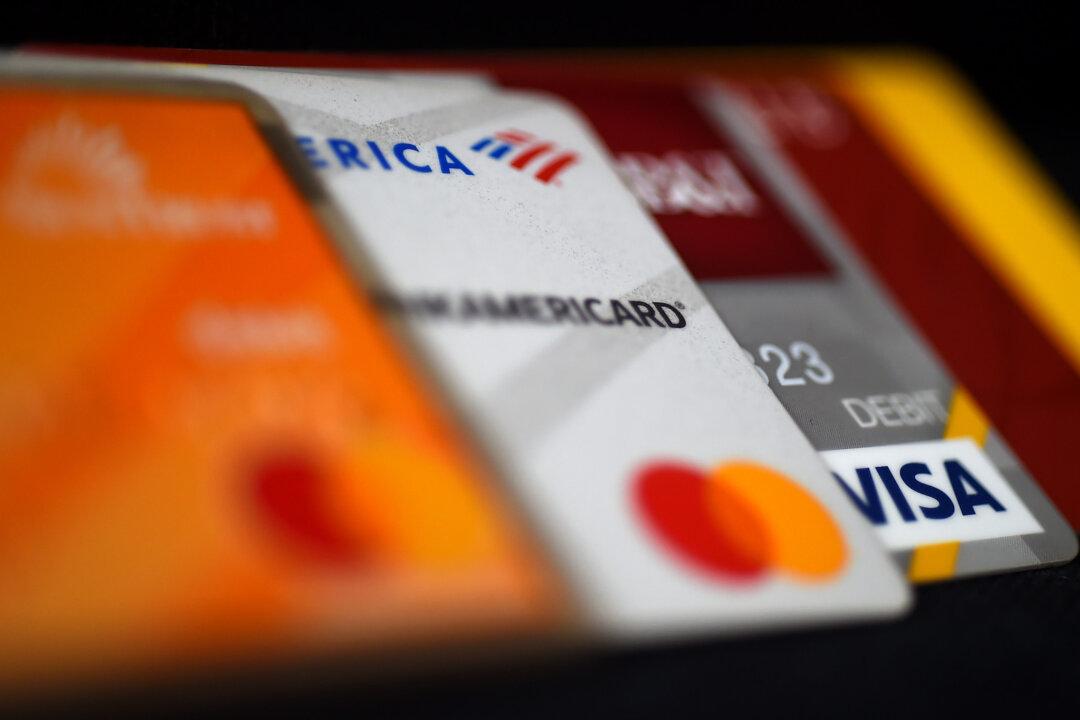Americans have amassed a record amount of credit card debt, which over the past year rose by $154 billion, the biggest annual jump in history, suggesting that consumers are increasingly having to borrow to prop up their spending.
The Federal Reserve Bank of New York released its quarterly household debt and credit report on Nov. 7, which shows that overall household debt rose by 1.3 percent in the third quarter, hitting a record $17.29 trillion.





